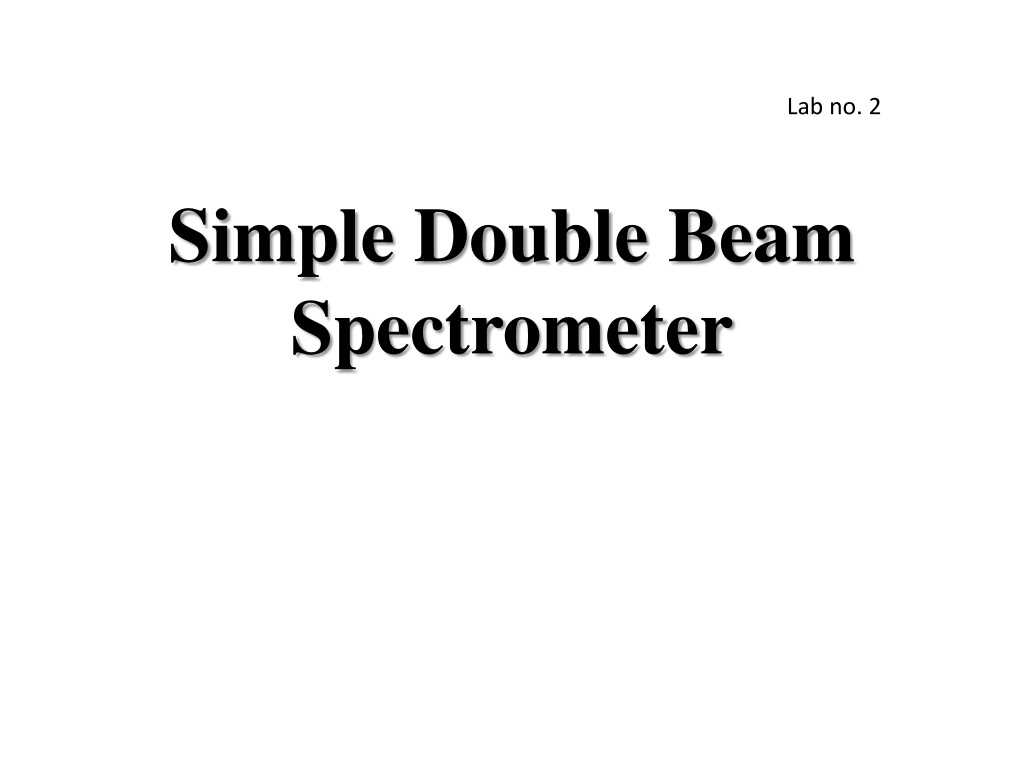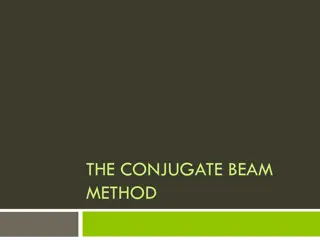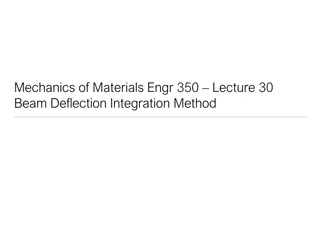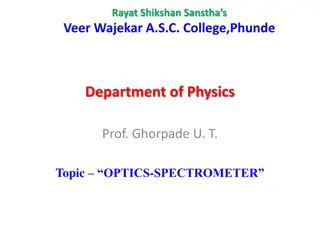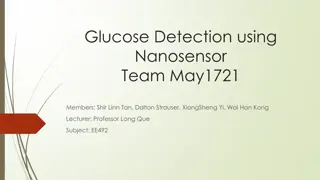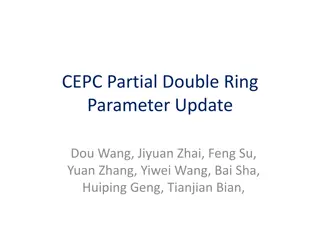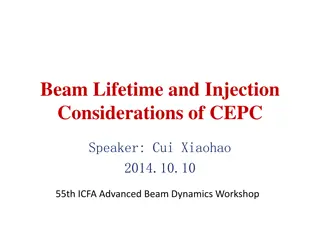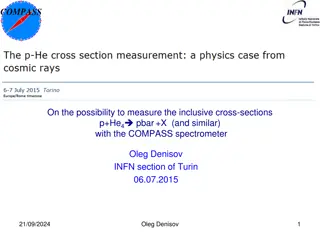Understanding the Simple Double Beam Spectrometer
The simple double beam spectrometer is a vital instrument used to measure the amount of light absorbed by a sample at a specific wavelength. This device utilizes two light paths originating from the same source - one for the sample and the other for the reference. By splitting light beams, utilizing diffraction gratings, and rotating discs, it can analyze light absorption accurately. Learn how this instrument works and its key components in this detailed guide.
Download Presentation

Please find below an Image/Link to download the presentation.
The content on the website is provided AS IS for your information and personal use only. It may not be sold, licensed, or shared on other websites without obtaining consent from the author. Download presentation by click this link. If you encounter any issues during the download, it is possible that the publisher has removed the file from their server.
E N D
Presentation Transcript
Lab no. 2 Simple Double Beam Spectrometer
The purpose of this instrument is to determine the amount of light of a specific wavelength absorbed by an analyte in a sample. -Double beam spectrophotometer has two light paths, both are originating from the same light source. One path is for the sample and the other for the blank or the reference
. The light source The beam from the light source is split into two. One beam to illuminates reference standard and the other to illuminates the sample light source which gives the entire visible spectrum plus the near ultra-violet so that you are covering the range from about 200 nm to about 800 nm.
Diffraction grating is an optical component with a periodic structure, which splits and diffracts light into several beams travelling in different directions The Slit only allows light of a very narrow range of wavelengths through into the rest of the spectrometer.
The Rotating Discs Have three different sections other designs may have a different number. Transparent section Mirrored section Black section .
The light coming from the diffraction grating and slit will hit the rotating disc and one of three things can happen:
If the light hits the transparent section, it will go straight through and pass through the cell containing the sample. It is then bounced by a mirror onto a second rotating disc. This disc is rotating such that when the light arrives from the first disc, it meets the mirrored section of the second disc. That bounces it onto the detector. It is following the red path in the diagram: transparent mirrored
If the original beam of light from the slit hits the mirrored section of the first rotating disc, it is bounced down along the green path. After the mirror, it passes through a reference cell. Finally the light gets to the second disc which is rotating in such a way that it meets the transparent section. It goes straight through to the detector. mirrored transparent
If the light meets the first disc at the black section, it is blocked - and for a very short while no light passes through the spectrometer. This to measure the amount of light produced by the detector.
The Sample and Reference cells These are small rectangular glass or quartz containers. They are often designed so that the light beam travels a distance of 1 cm through the contents. The samples can be gases or liquids The sample cell contains a solution of the substance you are testing - usually very dilute with solvent. The reference cell just contains the pure solvent.
The Detector and Computer The detector converts the incoming light into a current. The higher the current, the greater the intensity of the light. For each wavelength of light passing through the spectrometer, the intensity of the light passing through the reference cell is measured. This is usually referred to as Io - that's I for Intensity. The intensity of the light passing through the sample cell is also measured for that wavelength -
A simple bit of maths is then done in the computer to convert this into something called the absorbance of the sample - given the symbol, A. , the relationship between A and the two intensities is given by:
The advantages of a double beam system: -Are that light source variations are compensated, as are sensitivity changes in the detector. - Are easier make and more stable -A double beam instrument allows you to measure sample and reference standard at the same time. This improves analytical precision and sensitivity. - Speed of operation
Disadvantages of double beam Spectrophotometers - Cost is higher
